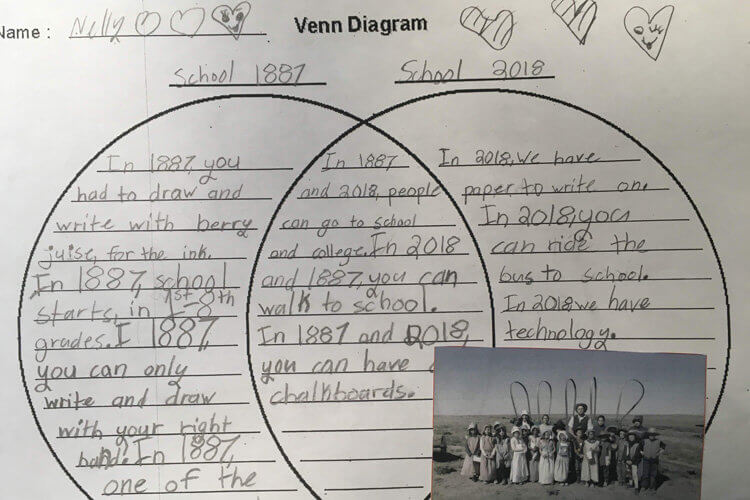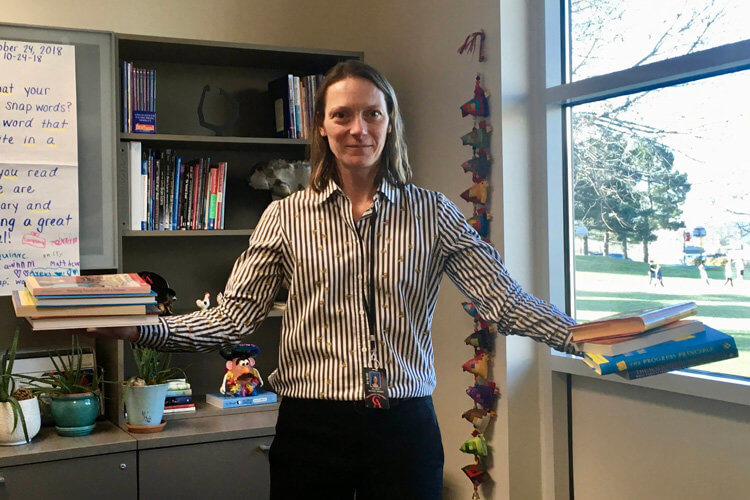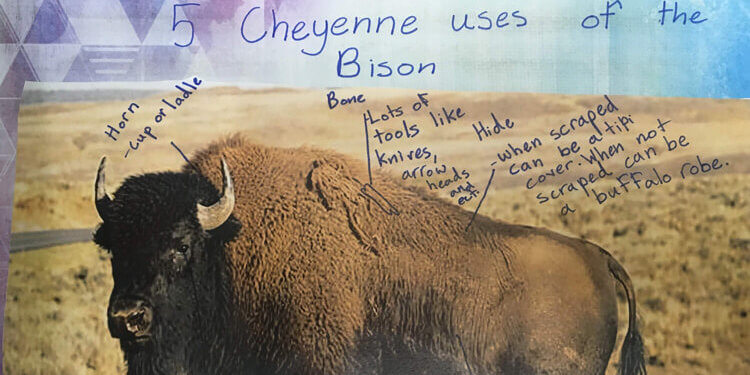Third Grade in the Lower School at Colorado Academy kicks off its yearlong study of Colorado with an annual visit to the Plains Conservation Center (P.C.C.), where learning about Colorado history, culture, and environment comes to life! At the P.C.C., Third Grade students explore life on the plains from the perspectives of both Native Americans and pioneers in the 1800s and learn more about the prairie ecosystem and the life forms it supports.
Prairie perspectives field study: ‘Where the skies are not cloudy all day’
In recent weeks, Third Grade students have been working on a project to synthesize their classroom learning and their hands-on experiences at the P.C.C. Students draw and label diagrams, craft small moment stories, write diary entries, and give directions in a “how to” of Native American or pioneer life, combining the many aspects of CA curriculum: reading, writing, social studies, and science. I met with students from CA’s three Third Grade classes to hear about what they learned and what they loved about this central part of their curriculum. Eli, Nelly, Tess, and Lillian pored over their writing projects with me, sharing their newfound knowledge of Colorado’s history, culture, and environment.

Prairie ecosystem: ‘Where the deer and antelope play’
Third Grade homeroom teachers collaborate with the Third Grade science teacher, Jeff Goldstein, to help students learn about the ecosystem of the prairie. An important part of this curriculum is learning about adaptation and how the plants and animals of the prairie have adjusted to the dry climate in order to survive. Students learned that the yucca plant can grow well with very little water and is perfectly adapted to the arid climate of the prairie and that the burrowing owl lives in the abandoned tunnels of prairie dogs because of the scarcity of trees. At the P.C.C., students got the opportunity to see these plants and animals in their natural habitat on the nature walk and the prairie wagon tour. They spotted coyote and pronghorn and plenty of yucca. Some lucky students even saw a rattlesnake.
Animal migration: ‘Where the buffalo roam’
At the P.C.C., Third Grade students also learned how bison migrated with the seasons to find water and food, and how this migration impacted the lives of those on the prairie, particularly the semi-nomadic Native Americans who followed the bison across the plains. The students started my lesson about bison with one of their newly learned fun facts: “Native Americans used every part of the bison, even the poop!” Using their bison diagrams, the students taught me that Native Americans were conservationists. From the hide used for the tipis that students saw at the Cheyenne Camp, to the bladder used for water bottles, to the bison beard that was used as fluff in a soccer ball, Native Americans did not waste any part of the bison, because their lives depended on the animal for food, shelter, clothing, weapons, fuel, and tools.

Pioneer life: ‘Home, home on the range’
Eli, Nelly, Lillian, and Tess had a lot to say about the differences between the one-room schoolhouses that pioneer children attended on the prairie and CA. They were surprised that all students shared a single classroom and that everyone wrote with berry ink. One similarity they were pleased to learn is that children in the 1800s enjoyed a daily recess just like they still do today. The students loved telling me what constituted inappropriate behavior in 1800s prairie schools and loved sharing the creative consequences for misbehaving even more. What was considered bad behavior? Being left-handed, giggling, not using good manners, and burping in class. And the consequences? For punishment, prairie children had to hold three huge dictionaries with arms extended on each side. We tried this last one with books in my office, and all struggled to succeed.
Their visit to the P.C.C. helped Third Graders understand the challenges of life on the prairie and showed them that to survive, everyone had to pitch in. They enjoyed their visit back in time to early Colorado and are already looking forward to their upcoming visits to Hiwan Homestead, the Argo Mine, and the National Western Stock show.
